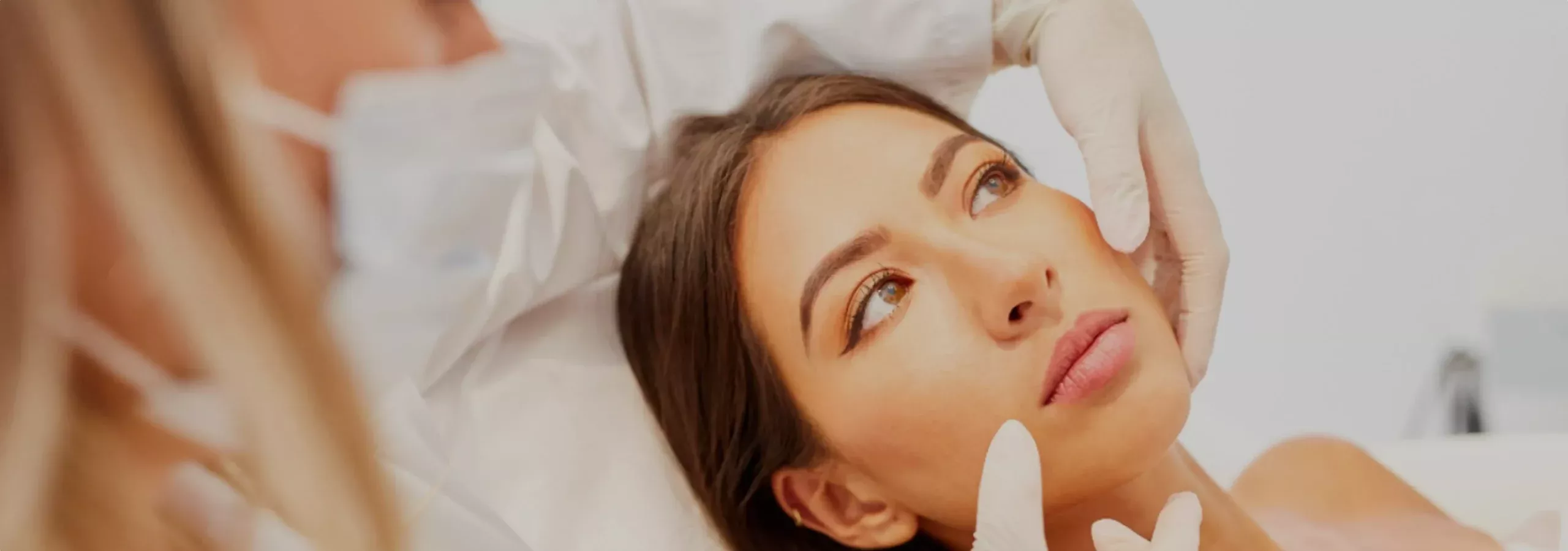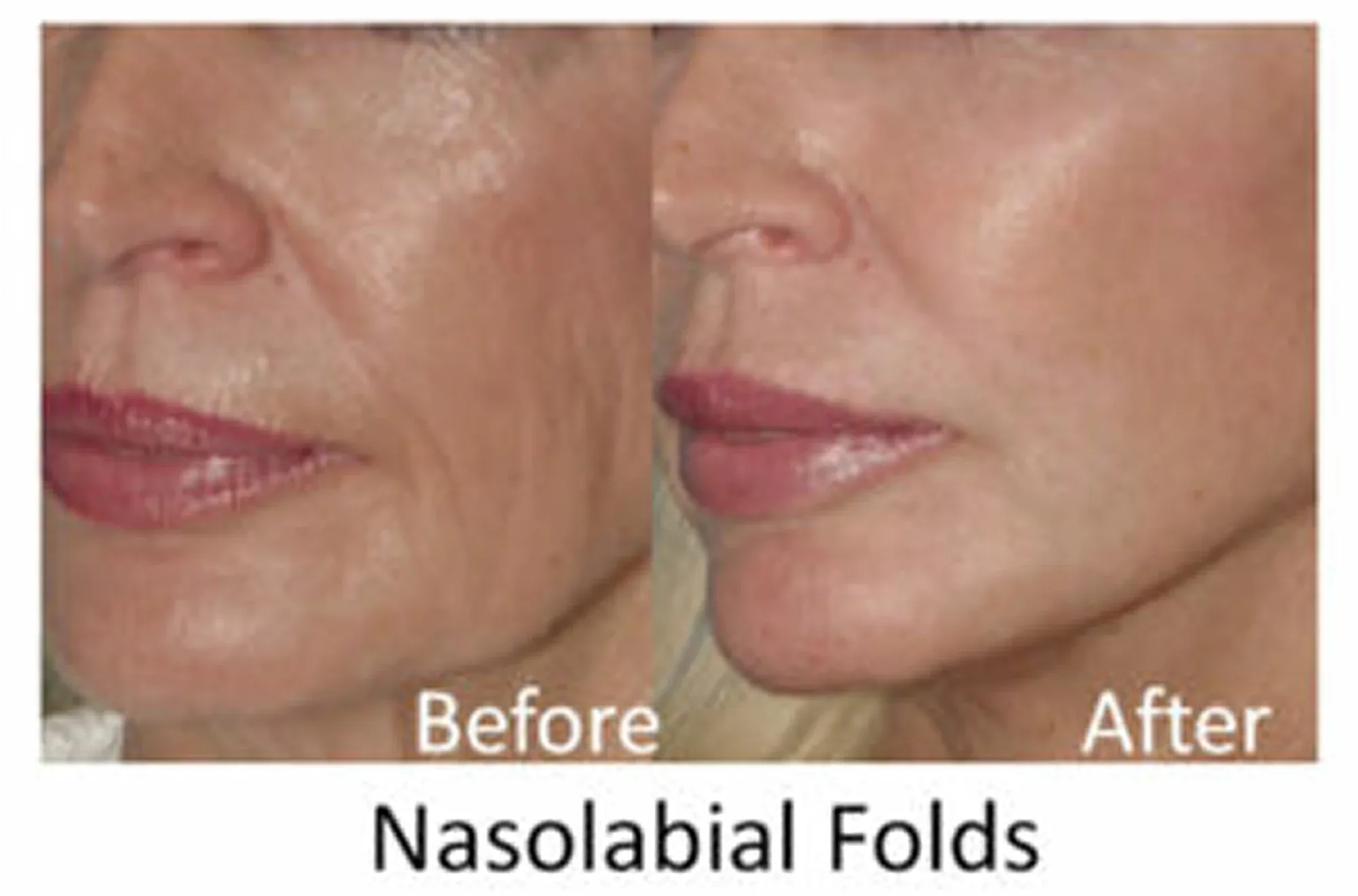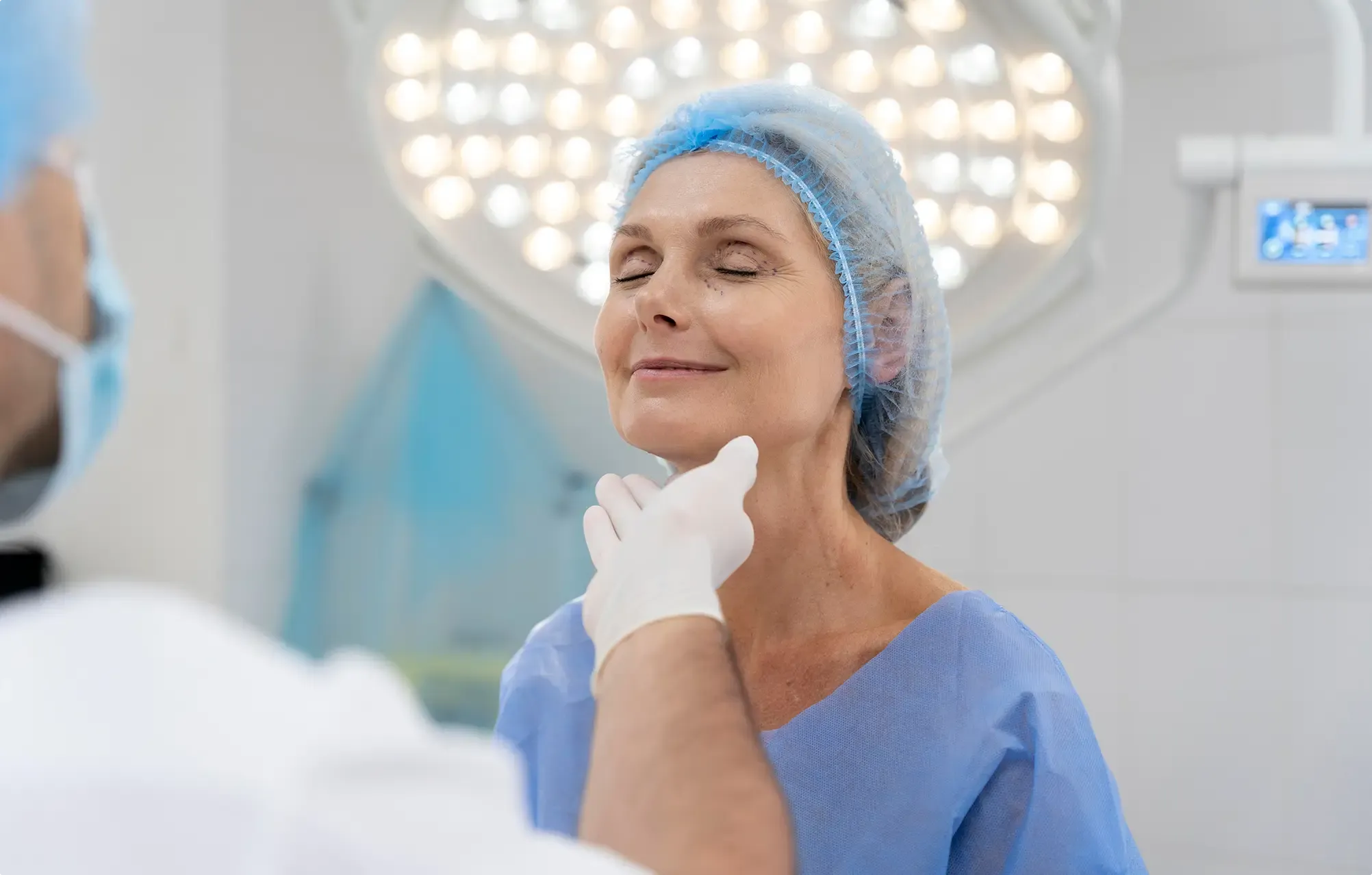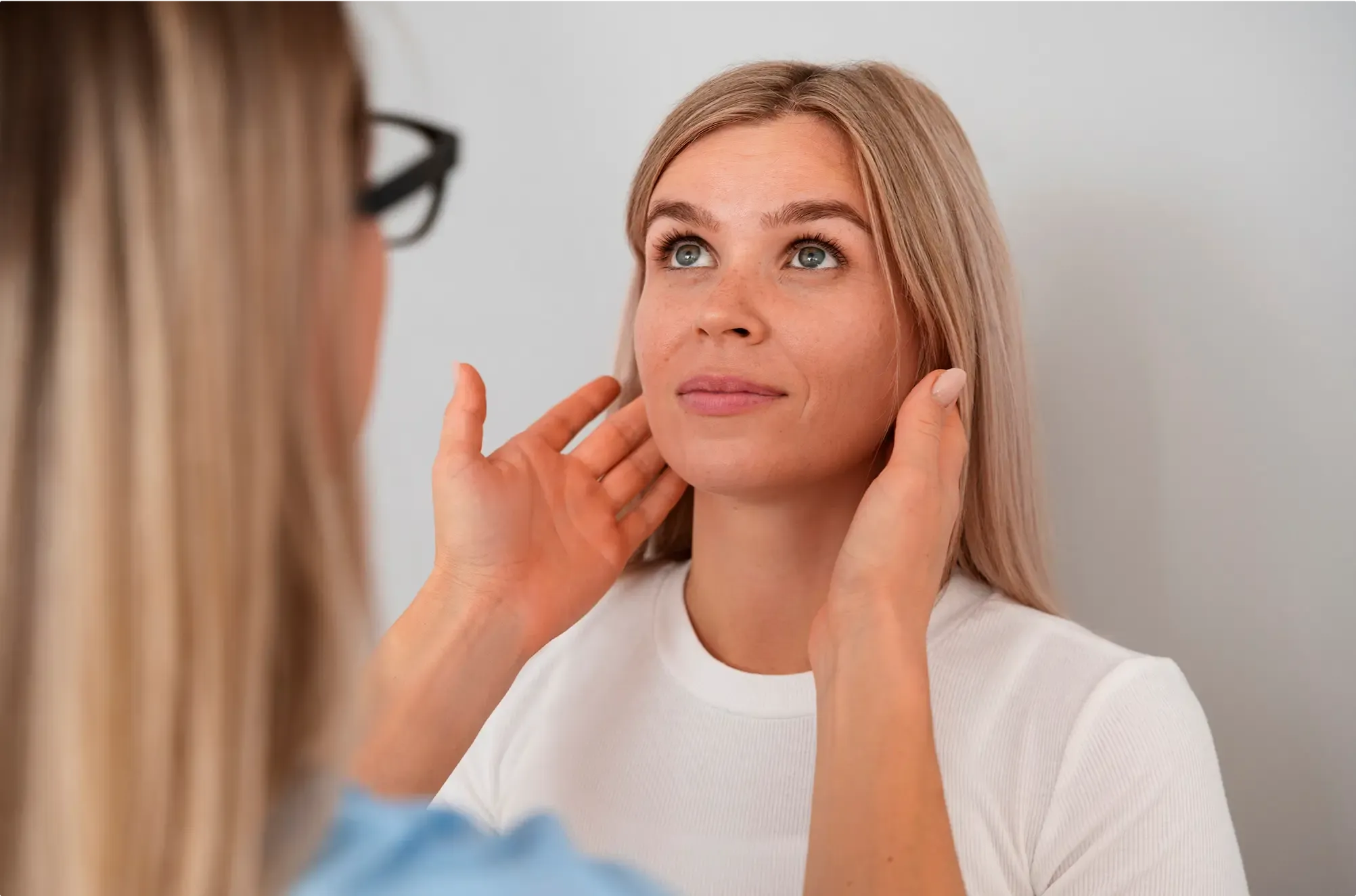
Experience Timeless Beauty with Complete Precision
At Mourad NYC, we approach facial rejuvenation as both a science and an art. A facelift offers more than just a younger appearance. It restores harmony to your features, softens the signs of aging, and helps you reflect how vibrant and confident you feel inside.
Dr. Moustafa Mourad, a double board-certified facial plastic surgeon in New York City, performs each facelift with precision and care, using techniques that lift, tighten, and smooth while preserving your natural beauty.
Dr. Moustafa Mourad, a double board-certified facial plastic surgeon in New York City, performs each facelift with precision and care, using techniques that lift, tighten, and smooth while preserving your natural beauty.
What is a Facelift?
A facelift, also known as rhytidectomy, is a cosmetic surgical procedure that lifts and repositions facial tissues to address the visible signs of aging. Over time, skin loses elasticity, fat volume shifts, and facial muscles weaken, leading to sagging, deep lines, and jowls. A facelift corrects these changes by lifting the underlying structure, removing excess skin, and redefining your natural contours.
Dr. Mourad offers a range of facelift options, from full facelifts that rejuvenate the entire face to mini facelifts focused on specific areas like the lower face or neck. Each surgery is personalized to fit your anatomy and your desired outcome.
Dr. Mourad offers a range of facelift options, from full facelifts that rejuvenate the entire face to mini facelifts focused on specific areas like the lower face or neck. Each surgery is personalized to fit your anatomy and your desired outcome.

Benefits of Facial Plastic Surgery
Facial rejuvenation surgery restores the structure and tone that time can soften. A traditional facelift does more than smooth the skin; it repositions the deeper layers of the face to lift sagging cheeks, define the jawline, and reduce loose skin around the neck. The benefits include:
- Reduces sagging skin along the jawline and neck
- Restores firmness and definition to facial contours
- Softens deep creases and folds around the mouth and nose
- Lifts drooping cheeks for a more youthful appearance around the mid-face
- Improves skin tone and texture for a smoother complexion
- Enhances confidence and self-image with long-lasting results
- Provides natural-looking rejuvenation rather than an over-tightened look
- Can be combined with eyelid surgery or brow lift for full-face harmony
Which Areas Can Be Corrected with a Facelift?
A facelift addresses several areas of facial aging by repositioning deep tissues, tightening muscles, and removing excess skin. Dr. Mourad uses advanced surgical techniques to create natural, long-lasting results specific to your needs. These are the most commonly improved areas:
Jowls As facial tissues shift downward with age, they can gather along the jawline and create a squared, heavy appearance. Dr. Mourad lifts and repositions the lower cheek structures to restore a smooth, more youthful contour.
Neck Banding Vertical lines or bands in the neck form when neck muscles pull tightly over time. By bringing these muscles together beneath the chin, Dr. Mourad creates a cleaner, more defined neckline.
Loose Skin Sagging skin on the face, neck, and forehead can make you look tired or aged. Dr. Mourad lifts the underlying facial structures first, then removes the extra skin without creating tension. This approach delivers a refreshed appearance that looks natural.
Fat Under the Chin Submental fullness (fat beneath the chin) can result from genetics, aging, or weight changes. Dr. Mourad often uses liposuction to remove this fat, followed by skin tightening techniques that refine the neck and jawline.
Midface Volume Loss When cheek tissue sags, it flattens the midface and deepens the folds along the sides of the nose and mouth. Dr. Mourad lifts this tissue to restore fullness in the cheeks and improve facial symmetry. In some cases, he might recommend additional volume using cheek implants or fillers.
Nasolabial Folds The lines between the nose and corners of the mouth deepen as cheek tissue falls. Repositioning the deeper layers of the face helps soften these folds. Dr. Mourad can also use fillers for added refinement when needed.
Jowls As facial tissues shift downward with age, they can gather along the jawline and create a squared, heavy appearance. Dr. Mourad lifts and repositions the lower cheek structures to restore a smooth, more youthful contour.
Neck Banding Vertical lines or bands in the neck form when neck muscles pull tightly over time. By bringing these muscles together beneath the chin, Dr. Mourad creates a cleaner, more defined neckline.
Loose Skin Sagging skin on the face, neck, and forehead can make you look tired or aged. Dr. Mourad lifts the underlying facial structures first, then removes the extra skin without creating tension. This approach delivers a refreshed appearance that looks natural.
Fat Under the Chin Submental fullness (fat beneath the chin) can result from genetics, aging, or weight changes. Dr. Mourad often uses liposuction to remove this fat, followed by skin tightening techniques that refine the neck and jawline.
Midface Volume Loss When cheek tissue sags, it flattens the midface and deepens the folds along the sides of the nose and mouth. Dr. Mourad lifts this tissue to restore fullness in the cheeks and improve facial symmetry. In some cases, he might recommend additional volume using cheek implants or fillers.
Nasolabial Folds The lines between the nose and corners of the mouth deepen as cheek tissue falls. Repositioning the deeper layers of the face helps soften these folds. Dr. Mourad can also use fillers for added refinement when needed.
Are You a Candidate for a Facelift?
You might benefit from a facelift if you feel your appearance no longer reflects your energy or confidence. Ideal candidates typically include:
- Adults noticing sagging skin or deep facial lines
- People with jowls or loss of jawline definition
- Individuals with neck banding or excess neck fat
- Those in good general health without medical conditions that impair healing
- Patients who want long-lasting results that look natural
What To Expect
What To Expect During Your Facelift NYC Consultation
Your journey starts with a one-on-one consultation with Dr. Mourad, where he takes the time to understand your goals and evaluate your facial structure in detail. This appointment lasts at least an hour and includes a thorough review of your medical history, an in-depth facial examination, and a thoughtful discussion of the changes you would like to see.
Using photographs taken from several angles, Dr. Mourad will help you identify specific features you wish to address. Computer imaging can also be used to visualize potential outcomes and align expectations. While these images are not guarantees, they serve as a helpful tool to guide the conversation and create a shared vision for your results.
This consultation also gives you time to ask questions, explore different surgical options, and feel fully informed before moving forward. Dr. Mourad will walk you through the surgical plan, recovery timeline, and what to expect every step of the way.
Using photographs taken from several angles, Dr. Mourad will help you identify specific features you wish to address. Computer imaging can also be used to visualize potential outcomes and align expectations. While these images are not guarantees, they serve as a helpful tool to guide the conversation and create a shared vision for your results.
This consultation also gives you time to ask questions, explore different surgical options, and feel fully informed before moving forward. Dr. Mourad will walk you through the surgical plan, recovery timeline, and what to expect every step of the way.
What To Expect During Your Facelift Procedure
Dr. Mourad customizes every facelift with precision and care. On the day of your procedure, you will arrive at the surgical facility where the team will help you prepare and make sure you feel at ease.
During surgery, Dr. Mourad works meticulously to lift and reposition the deeper layers of your face, carefully remove excess skin, and refine your natural contours. He uses advanced techniques to control bleeding during the procedure, which means drains are not needed, and discomfort is kept to a minimum.
After surgery, a light pressure dressing is placed to support the tissues. This will be removed the following morning, either in the office or at your hotel. You will stay overnight at a nearby hotel with a dedicated sitter to help you rest comfortably and safely.
Most patients need only one dose of prescription pain medication before switching to Tylenol. It is normal for the neck to feel tight during the first few weeks, which actually helps maintain long-term definition. Bruising and swelling around the neck and sides of the face begin to fade within days. Most visible swelling resolves within two weeks, though your results will continue to refine over the following year.
You will return to Dr. Mourad’s office one week after surgery and continue follow-up visits as needed to monitor your healing. Avoid strenuous exercise for the first three weeks to support the best possible outcome.
During surgery, Dr. Mourad works meticulously to lift and reposition the deeper layers of your face, carefully remove excess skin, and refine your natural contours. He uses advanced techniques to control bleeding during the procedure, which means drains are not needed, and discomfort is kept to a minimum.
After surgery, a light pressure dressing is placed to support the tissues. This will be removed the following morning, either in the office or at your hotel. You will stay overnight at a nearby hotel with a dedicated sitter to help you rest comfortably and safely.
Most patients need only one dose of prescription pain medication before switching to Tylenol. It is normal for the neck to feel tight during the first few weeks, which actually helps maintain long-term definition. Bruising and swelling around the neck and sides of the face begin to fade within days. Most visible swelling resolves within two weeks, though your results will continue to refine over the following year.
You will return to Dr. Mourad’s office one week after surgery and continue follow-up visits as needed to monitor your healing. Avoid strenuous exercise for the first three weeks to support the best possible outcome.

Why Patients Trust Dr. Mourad
Patients choose Mourad NYC because of the individualized attention, advanced surgical skill, and natural-looking results. Dr. Mourad has built his reputation on creating facial enhancements that look seamless, not surgical. His experience in multiple facelift techniques allows him to recommend the right approach for your face and lifestyle.
From consultation to recovery, you will receive attentive, expert care. Dr. Mourad does not take shortcuts, and he will only recommend surgery if he believes it will provide real value. He stays personally involved throughout the entire process, offering the kind of hands-on support that makes all the difference in how you look and feel after surgery.
From consultation to recovery, you will receive attentive, expert care. Dr. Mourad does not take shortcuts, and he will only recommend surgery if he believes it will provide real value. He stays personally involved throughout the entire process, offering the kind of hands-on support that makes all the difference in how you look and feel after surgery.
What Are the Risks of Facelifts?
While facelifts are considered safe and effective when performed by an experienced surgeon, like any surgery, there are potential risks. These include:
- Infection
- Reactions to anesthesia
- Fluid or blood collection under the skin
- Temporary or permanent nerve changes
- Delayed or poor wound healing
- Visible or uneven scarring
- Hair thinning around incision sites
- Skin color changes
- Irregularities in contour or texture
- Results that do not meet expectations


Transform Your Look
Schedule Your Appointment with Dr. Mourad
If you are considering a facelift and want results that enhance your natural beauty without looking overdone, schedule a consultation with Dr. Moustafa Mourad today. You will receive personal, expert guidance at every step—from your first visit to your final result.
Frequently Asked Questions: Facelift Surgery
Why choose Dr. Mourad over other facial plastic surgery clinics?
Dr. Mourad is a double board-certified specialist in facial plastic surgery with extensive experience in traditional facelift, mini facelift, and deep plane facelift techniques. He delivers natural results using advanced methods, provides personalized care, and guides you through every stage of the process with integrity and expertise.
How long do the results of a facelift last?
Most patients enjoy their facelift results for 10 years or more. While your face continues to age naturally, the improvements from facelift surgery, especially with Dr. Mourad’s deep plane facelift technique, keep you looking younger than if you had not had surgery.
What is the recovery time after a facelift?
Most patients return to social activities within two to three weeks. Swelling and bruising subside during the first two weeks, and subtle refinements continue over the following year. Dr. Mourad follows your progress closely through scheduled follow-up visits.
Which types of facelift surgeries do you perform?
Every face tells a different story, and Dr. Mourad’s approach reflects that. He offers several facelift techniques, each designed to address specific aging concerns and aesthetic goals. During your consultation, he will recommend the right option based on your anatomy and desired outcome.
- Deep Plane Facelift: This advanced technique lifts the deeper facial layers, not just the skin. The incisions are hidden around the ear and into the hairline. It repositions underlying structures for natural movement, removes excess skin, and often includes neck liposuction. Dr. Mourad may also tighten the neck muscles using a small incision under the chin.
- Mini Facelift: Targeting the lower face and jowls, this less invasive surgery involves smaller incisions and a shorter recovery time. It lifts and firms the cheeks and jawline with subtle yet noticeable results. Ideal for those with early signs of aging.
- Short-Scar Facelift: Similar to a deep-plane facelift, this version uses a smaller incision that does not extend into the hairline. It works best for patients with minimal neck sagging. This option limits scarring but requires careful candidate selection.
- Endoscopic Facelift: Using small instruments and a camera, Dr. Mourad performs this lift through tiny incisions. It targets the midface and neck with less visible scarring. Ideal for patients looking to improve specific problem areas without a full lift.
- Skin Lift: For patients with mild skin laxity but strong underlying support, a skin lift can remove excess tissue and refresh the appearance. This procedure can also correct scarring from past facelifts and is often done under local anesthesia in the office.
- Lunchtime Lift: This approach uses threads or lasers for a quick lift with minimal downtime. However, the results tend to be short-lived and can cause dimpling or puffiness. While Dr. Mourad is trained in these methods, he does not recommend them due to their inconsistent results and temporary effects.
Is a facelift painful?
Discomfort is generally mild. Most patients use prescription medication for one day after surgery, then transition to Tylenol. You might feel tightness in the neck, which is expected and helps support your neck lift results.
Can other procedures be done at the same time?
Yes. Many patients combine their facelift with rhinoplasty, brow lift, eyelid surgery, cheek implants, or chin implants. These procedures help to enhance facial balance and create a more complete result. Non-surgical additions such as laser peels, fillers, or Botox Cosmetic can also refine the outcome.
Will I have visible scars?
Dr. Mourad places incisions within natural creases around the ears and along the hairline to keep scars discreet. He avoids tension on the skin, which supports better healing. Most scars fade well with time and become barely noticeable.
Does insurance cover facelift surgery?
Because facelift surgery is considered cosmetic surgery, insurance does not cover it. However, if your surgery includes a functional procedure, such as eyelid surgery to improve vision, that part might be eligible. Our office will review this with you during your consultation.
Am I too young or too old for a facelift?
Candidacy for facial cosmetic surgery depends on your health, skin elasticity, and aesthetic goals, not your age. Patients in their 40s to 70s benefit from facial rejuvenation surgery to correct sagging skin, excess fat, and weakened facial muscles.
How does a facelift differ from non-surgical treatments?
Non-surgical treatments improve the surface of facial skin or add volume, but cannot lift facial tissues or correct deeper aging. Face lift surgery repositions sagging skin and underlying structures for more significant and long-lasting results.
How is your practice different from other facelift plastic surgery clinics?
At Mourad NYC, we offer a more personal experience for those who choose to undergo facelift surgery. You work directly with Dr. Mourad, who listens, plans, and performs your procedure. We take the time to speak with you and truly listen to your cosmetic goals, carefully plan the best approach to your facelift, and follow up. The result often feels more individualized than what you find in more general facial plastic surgery clinics.




